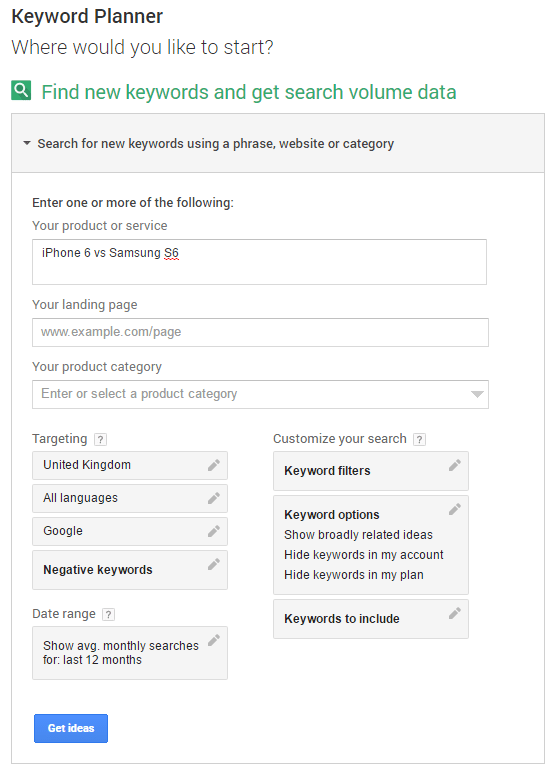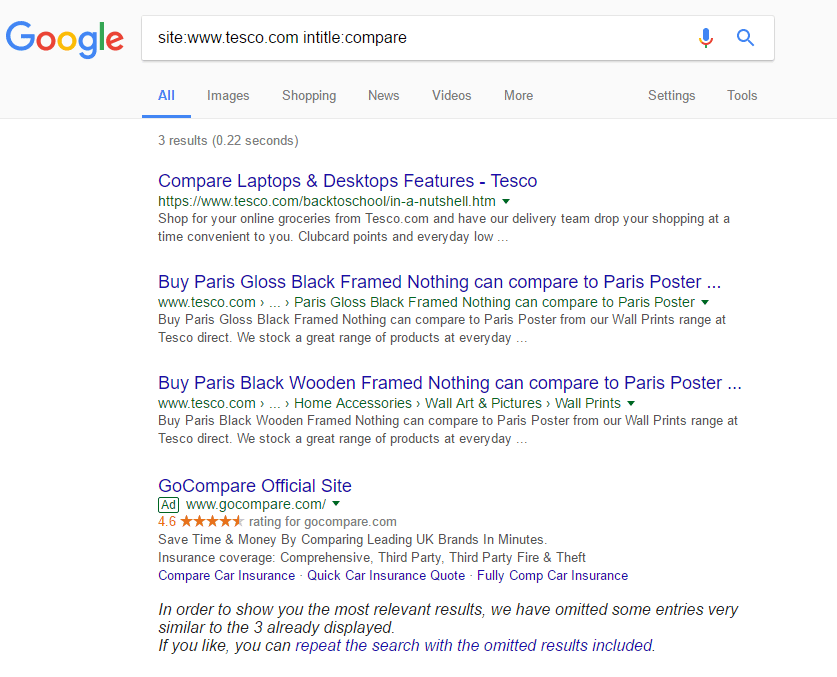How Tesco Can Improve Their Traffic, Content and Sales
One of the UK’s leading grocery and general merchandise retailers are missing out on huge traffic and sales.
Yes, you read that right. Even some of the largest brands in the UK can improve their traffic, content, and even conversions.
How do you ask? Simple, by improving their content marketing to attract more customers and sell more online.
In this post, I’m going to show you exactly how even the big brands can improve their content marketing. For the sake of this post, I’m going to be using Tesco.
When it comes to purchasing products or groceries, there are five different levels of customer intent – otherwise known as the customer buying cycle.
5 Levels of Customer Buying Cycle
- Awareness – Potential customer identifying a need, and the realisation that your business can potentially fill it.
- Consideration – Your potential customer is now evaluating how your offer meets their needs.
- Preference/Intent – This is where your potential customers logical and emotional inclination towards one solution or another leads to their purchasing decision.
- Customer Purchase – This is the action of your customer ordering and purchasing from your eCommerce website.
- Repurchase – You gave your new customers such a great experience the first time, it’s only logical they buy from your website again.
So, with the customer buying cycle in mind, you probably think Tesco are getting it all right, right? Not quite, and here’s why.
How Can Tesco Improve Their Buying Cycle?
Let’s put ourselves in the customer’s shoes, something I always do when we get a new client who sells products online or/and offline.
We want a new smartphone, but we aren’t sure whether to choose the new iPhone or a Samsung Galaxy, what do we do? We look for some comparisons.
So, we’d probably head to Google, and search something along the lines of “iPhone 6 vs Samsung S6” to get a better understanding of which smartphone is best for the job. Go ahead and search the query yourself.
You will see something like this;

Not one of the results that we see is one that sells either of the phones, for me, this is a massive facepalm moment. Big brands – not just Tesco – are forgetting step one and one of the most important parts of the customer buying cycle – the Awareness stage.
Big retailers are missing out masses of traffic from people researching which phone to purchase next.
The Awareness Phase
The awareness phase of a customer is not too dissimilar to that of a digital marketer. We just have to understand what it is the customer wants to research.
In this case, we know the customer wants to find out which is the best smartphone to have. However, this isn’t something we already know straight away, with that in mind – we have to identify the different types of search queries.
For example:
- “Smartphones” – This is a very generic term that is more than likely used by customers in the awareness or consideration stage.
- “iPhone 6 vs Samsung S6” – The desire of this search query is to compare products, which indicates the customer is further along the buying cycle – such as the consideration or preference stage.
- “iPhone 6” – This is a very specific product search, indicating that a shopper is towards the end of the buying cycle and is about to make a purchase.
Now we know the different types of searches, it’s time to get traffic coming to your website.
But, before we dive into the consideration phase, does the query we think the customer searches get volume?
Well, head on over to Google’s Keyword Planner, enter the term “iPhone 6 vs Samsung S6”. – Remember, I’m using the “compare” mentality as big brands such as Tesco aren’t targeting these searches.

And press the blue button “Get ideas” to find out how many searches this query gets on average for the last 12 months. Depending on your location, you may want to change the country and language you’re targeting.
The Results
As you can see from the results, the search query “iPhone 6 vs Samsung S6” gets on average 590 searches per month. That’s 590 more users to your website – a month – with the intent of potentially purchasing a new smartphone.
 In Tesco’s case, this is 590 people they’re not targeting. Now, 590 extra users a month, might not sound like much, but if you can provide the user with great content and a fantastic conversion funnel, this could lead to potentially 7,080 more conversions per year.
In Tesco’s case, this is 590 people they’re not targeting. Now, 590 extra users a month, might not sound like much, but if you can provide the user with great content and a fantastic conversion funnel, this could lead to potentially 7,080 more conversions per year.
This leads on to the next stage.
The Consideration Phase
This is where we can start to get a bit creative.
The whole purpose of this stage is to devise a strategy and put a plan together so that when we create our new comparison page, our new page meets the needs of the customer.
We know the customer intent behind this new page, is to give customers information regarding the iPhone 6 and the Samsung s6.
This is something I’d say Trusted Reviews and TechRadar are doing reasonably well, however, there is room for improvement – in my opinion, but I won’t get into that.
(Leave a comment in the comments below on how you would improve these pages).
So, if websites such as the two mentioned above, are targeting these sort of terms and articles, we know it’s a topic the likes of Tesco must be targeting to, right?
Well, unfortunately for Tesco, they have three – yes three – pages indexed with the term “compare” in the title. Don’t believe me? Check out the image below:
 The Ad at the bottom also brings a smile to my face, but that’s for GoCompare’s PPC team to sort.
The Ad at the bottom also brings a smile to my face, but that’s for GoCompare’s PPC team to sort.
Anyway, back to the task at hand.
The Problem
Only one of the three indexed pages showing is even relevant to the term “compare”, and what a page that is…hmm I’m not so sure.
I find this staggering that a brand such as Tesco – and they’re not the only ones – aren’t targeting these types of searches.
Brands like Tesco have everything, brand awareness, trust, and they even sell these smartphones. Why would you not have compared pages?
If Tesco could provide the information people are clearly looking for, and with a sales funnel plan in mind, they’re not only providing people with the information they want, they can also sell them the product they’re looking for.
TechRadar and Trusted Reviews don’t sell these products, giving the likes of Tesco the upper hand.
At the moment on the Tesco website, it seems their content marketing strategy – if they even have one – seems to be, well “we rank well for product pages”.
Great, but they’re forgetting about the user journey, not all users want to be treated with transactional pages.
Customers when purchasing these sorts of products need to be nurtured and constantly reassured they’re making the correct purchase.
The Preference/Intent Phase
Remember this is the stage customers inclination and logical choice towards one solution or another.
Thanks to what we have discussed above, we can mould the customer’s emotional inclination and logical choice to purchase their new smartphone from the same place they compared the two smartphones.
If we can do this – and there’s no reason as to why we can’t – then we get the potential customer to jump to the “Purchase phase”, and what a lovely phase in the buying cycle that is.
The Purchase Phase
“The customer action of ordering and buying from your eCommerce website”.
So, let’s sum up what we have accomplished together thus far.
- We have identified a gap in our content marketing.
- We have identified the query customers are searching.
- We have created a page offering the information the customer is searching for.
- We have nurtured the customer into making a purchase from our store.
How does this differ to what Tesco are doing now?
Currently, people are searching the query “iPhone 6 vs Samsung S6” and are having to find out the information they want on an external website, leaving no guarantee these people will even consider purchasing from Tesco in the future.
That’s where this method comes into its own.
We are giving potential customers the information, and an eCommerce website at the same time. Potentially reeling in much more sales than before.
The Repurchase Phase
This is an essential part of any business. Once people have made the purchase, we need to be proactive and keep in contact with our customers.
How can I Target Existing Customers?
There are many ways we can target our existing customers, but a few of the most effective ways of doing so are as follows:
- Use the steps above to produce informative and actionable content on a regular basis – we know your customers love it, keep producing.
- Implement an effective email marketing campaign.
- Devise a creative social media campaign.
- One of the most effective ways to get those customers coming back is with personal outreach – don’t forget this if you wish to be successful.
Over to You
I hope this article has given you a lightbulb moment and helps you find new ways you can be innovative with your content marketing.
Please let me know in the comments below how you overcome new content marketing challenges, and how you identify new opportunities.
Do you wish to discuss how this can be applied to your website? Email me at tc@dijtul.uk, and I’d be happy to help.